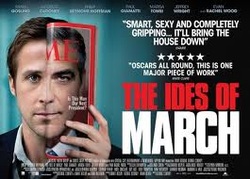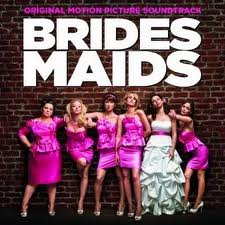|
Season's greetings to you all, and may 2012 be the best yet! (And here is my card depicting the truth about the writing from the pen of the wonderful Charles Barsotti, www.barsotti.com )
0 Comments
 BLOG.LINDAARONSON.INFO: The Ides of March. I loved it but... The Ides of March. I loved it but... Hi Everyone Many apologies for the silence. I've now finished a very busy lecture tour to Europe. It was hugely interesting, and as ever I met all kinds of interesting writers. I saw The Idea of March last night. Very nicely done, but I had a couple of niggling queries over motivation that spoilt the film a little for me. I found it hard to believe that the young girl would go to her boss to help her in the situation she was in. I don't think she'd have risked that. I think her first recourse would have been her friends. I also didn't know why our hero went to the fateful meeting, or why he covered up initially. And I didn't know why our hero didn't get the money from his own account, rather than risk being accused of putting his hands in the cash register. Very minor issues, but they could, actually, have been fixed simply by tiny tweaks to the dialogue, by inserting a sentence of explanation as to the motives. Otherwise, it was a fine film.  Bridesmaids is about a group but it’s not a multiple protagonist film. I think it’s a special kind of buddy movie and it closely resembles Four Weddings and A Funeral. So what? Why does this matter? It doesn’t if you’re not a writer. It matters a lot if you are, because if you ever find yourself writing a film with the same kind of content as Four Weddings or Bridesmaids you may well need to use their pattern, and to do that, you need to know what kind of plot material and structure their pattern requires in order to work. Okay. Let’ s look at this. Why aren’t Four Weddings and Bridesmaids multiple protagonist structures? Because they aren't about different versions of the same protagonist, with each protagonist having its own action and relationship lines and the film following each protagonist in turn (all of which means you have to create a lot of story strands to tell all their stories). Instead, both films are centred around a single protagonist, who stays on screen almost all the time and has their own relationship line, a love story, with someone who’s not part of the group. Crucially, the action doesn’t leave that protagonist to follow other characters into their lives or their doings except momentarily. Hence, Bridesmaids and Four Weddings are not about ‘a group of characters having an adventure - a quest, a reunion or a siege. They’re more like: ‘ A person has adventures with a whacky group.’. Clearly, the amount and type of plot you have to create is very different. And that is why, as a writer, you need to care. So, does your film need this kind of structure? It all comes back to the story you want to write. Our rule is ‘content dictates structure’, so what’s your content? Is the film you want to write primarily about a troublesome/interesting/charming group? Or is it primarily about one person interacting with a troublesome/interesting/charming group? Are you thinking ‘Kim, Jenny, Pete, Mary and Sam go on an adventure’ or ‘Kim goes on an adventure with Jenny, Pete, Mary and Sam’ Are you thinking ‘Five friends go on an adventure’ or ‘A girl goes on an adventure with three friends’? Four Weddings and Bridesmaids are both romantic comedy versions of the second type. But there are serious versions of this type, for example, The Counterfeiters , which is about a man in World War II who is forced to lead a team producing counterfeit banknotes. Be careful though. There is no status or superiority in having a single protagonist story, so if the heat of your story is the group, don’t feel you have to pull out one member of the group and construct the film around them. Always find your answer by asking: ‘what story do I want to tell?’ Then make action and relationship vividly real but unusual. Meanwhile, I need to think more about this new kind of multiple buddy movie. Watch this space. |
AuthorLinda is a screenwriter, novelist and playwright. As well as teaching and mentoring writers around the world, she regularly consults on screenplays at the highest level in the US, UK and Australia. Subscribe to Linda Aronson's Craft Skills NewsletterArchives
June 2017
Categories
All
Note: Hi everyone. For RSS feed from this blog, you'll need feedly.com or theoldreader.com. Thanks, Linda
|

 RSS Feed
RSS Feed


